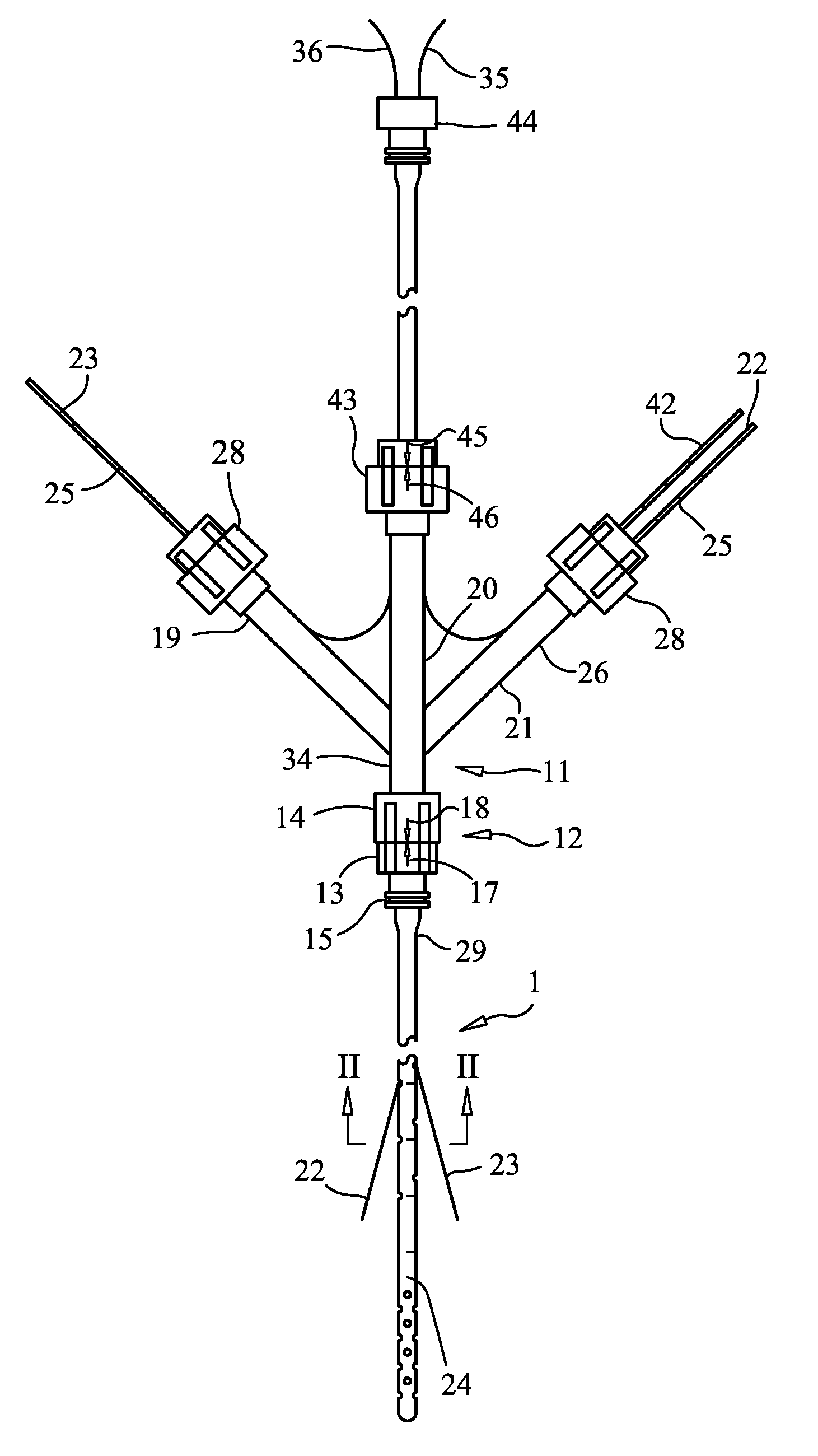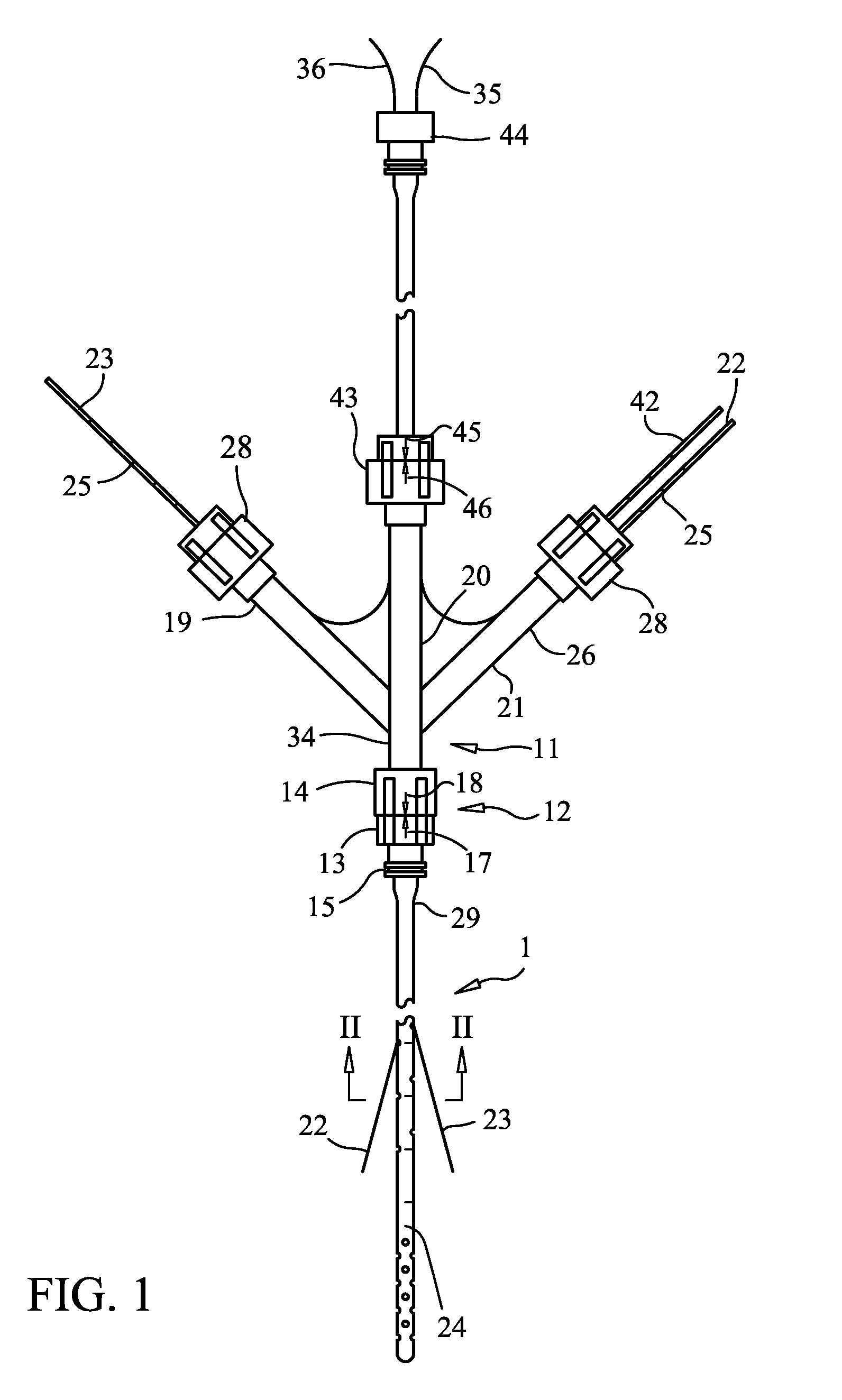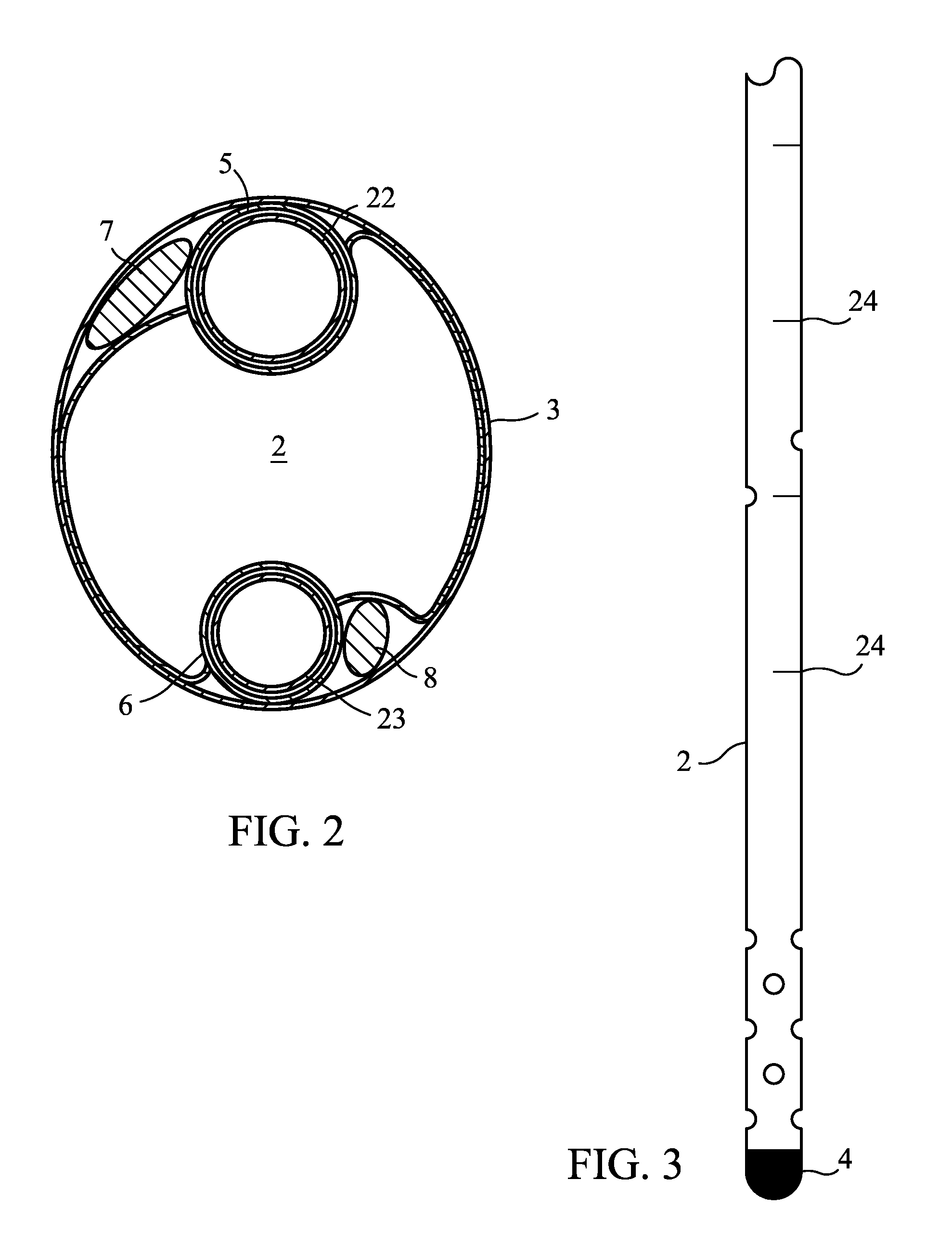Multimodal Catheter for Focal Brain Monitoring and Ventriculostomy
a multi-modal catheter and brain technology, applied in the field of ventricular catheters, can solve the problems of inability to characterize the underlying brain tissue, the inability to monitor the brain, the inability to use speech and/or memory, etc., and achieve the effects of convenient connection, convenient use, and convenient us
- Summary
- Abstract
- Description
- Claims
- Application Information
AI Technical Summary
Benefits of technology
Problems solved by technology
Method used
Image
Examples
Embodiment Construction
[0044]Referring now to the figures of the drawing in detail and first, particularly, to FIG. 1 thereof, there is seen a ventricular catheter 1 according to the invention. The ventricular catheter 1 includes an external ventricular drainage (EVD) catheter 2; see FIGS. 2-4. The EVD catheter 2 is a generally elongated tube formed by a wall 3. The EVD catheter 2 preferably has a length of twenty centimeters (20 cm). This length allow for the distal tip 4 to be inserted into the brain and the proximate end 29 to be tunneled subcutaneously along the skull. The outer diameter of the EVD catheter 2 is preferably between 3.2 and 3.8 mm. The inner diameter of the EVD catheter 2 is preferably between 1.8 and 2.0 mm. The distal tip 4 of the EVD catheter 2 is made of a radio-opaque material.
[0045]FIG. 2 shows a cross section of the ventricular catheter 1 taken along Line II-II in FIG. 1. The overall crossection of the ventricular catheter 1 is oval shaped. The wall 3 of the ventricular catheter ...
PUM
 Login to View More
Login to View More Abstract
Description
Claims
Application Information
 Login to View More
Login to View More - R&D
- Intellectual Property
- Life Sciences
- Materials
- Tech Scout
- Unparalleled Data Quality
- Higher Quality Content
- 60% Fewer Hallucinations
Browse by: Latest US Patents, China's latest patents, Technical Efficacy Thesaurus, Application Domain, Technology Topic, Popular Technical Reports.
© 2025 PatSnap. All rights reserved.Legal|Privacy policy|Modern Slavery Act Transparency Statement|Sitemap|About US| Contact US: help@patsnap.com



